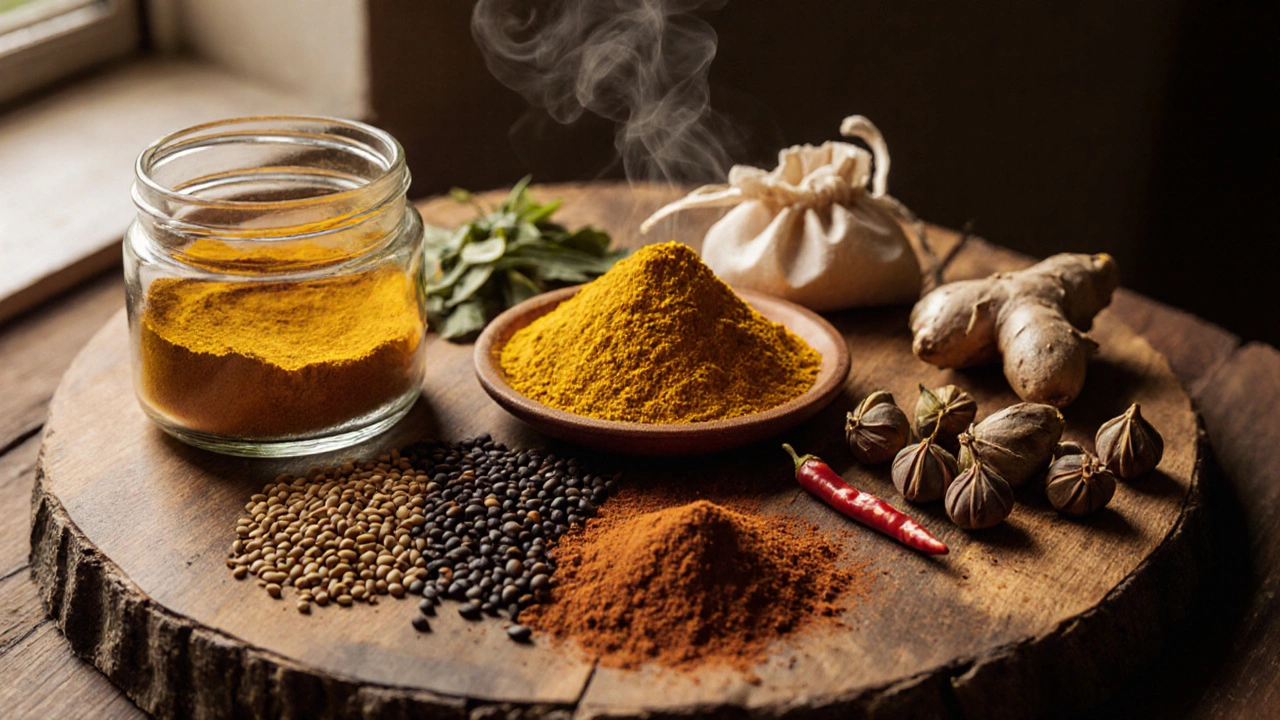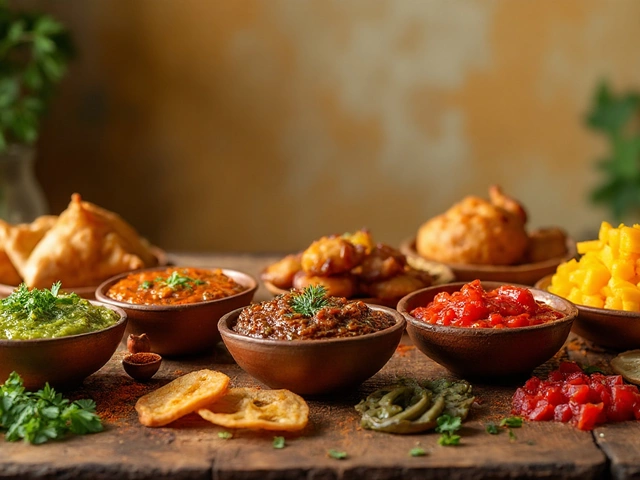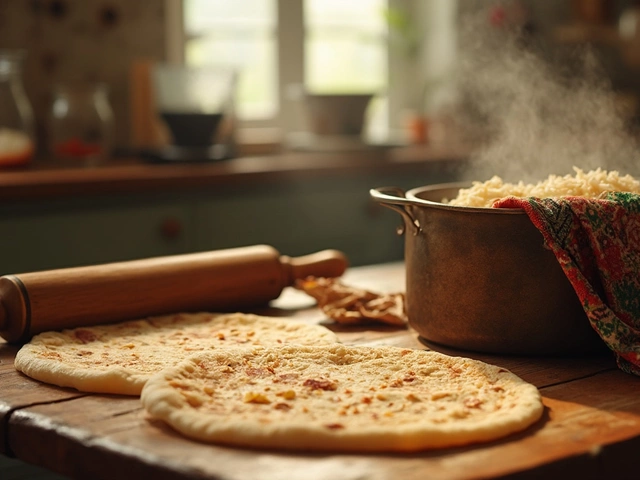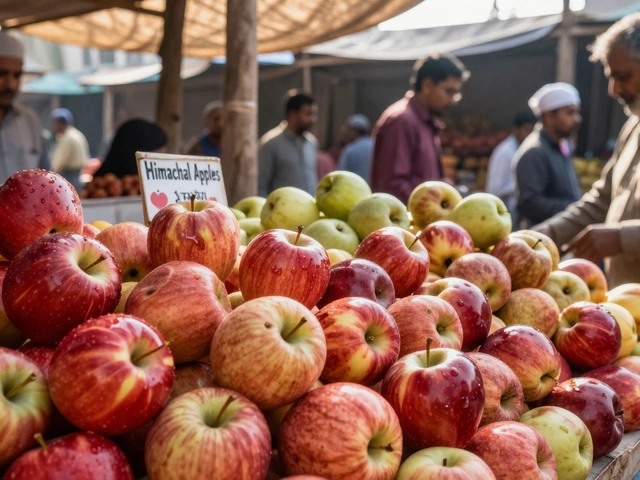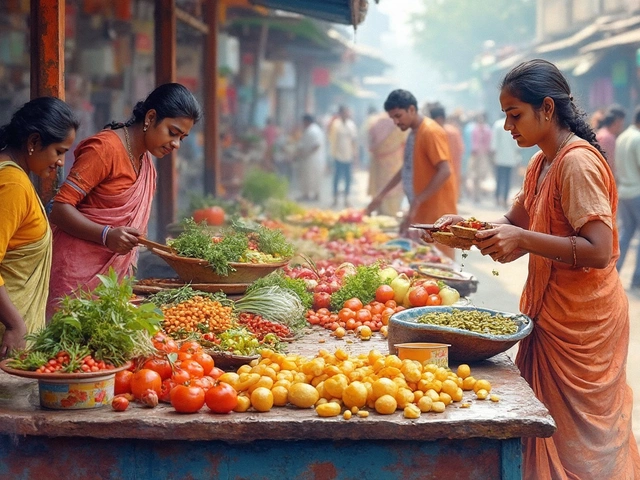Curry Spice Calculator
Create Your Perfect Curry Powder
Your Custom Spice Blend
Key Takeaways
- Turmeric, cumin, coriander, mustard seeds, fenugreek, cardamom, chili, and ginger are the backbone of most curries.
- Each spice adds a specific note - earth, heat, sweetness, or bitterness - that balances the dish.
- Store them in airtight containers away from light to keep flavor for up to two years.
- A simple homemade curry powder can be made with just four ingredients and a few minutes.
- Simple swaps (e.g., paprika for chili) let you adapt to what’s on hand without losing authenticity.
When you start a curry spices blend, you’re tapping into a palette that has shaped Indian cooking for centuries. Curry spices refer to the core dry ingredients that bring warmth, earthiness, and aroma to a sauce. Whether you’re simmering a quick weeknight korma or a festive biryani, the same handful of spices usually show up. Below we break down the essential players, why they matter, and how to keep them fresh.
Why a Few Spices Matter More Than a Dozen
Indian cuisine uses a giant spice pantry, but most traditional curries rely on a core set that creates the characteristic flavor base. Those core spices do three things:
- Build depth: Earthy, bitter, sweet, and pungent notes layer together.
- Provide heat: Not just spice heat, but aromatic heat that opens up your palate.
- Bind the sauce: Some spices release natural oils that help thicken and emulsify the gravy.
Mastering the core set lets you improvise any regional style with confidence.
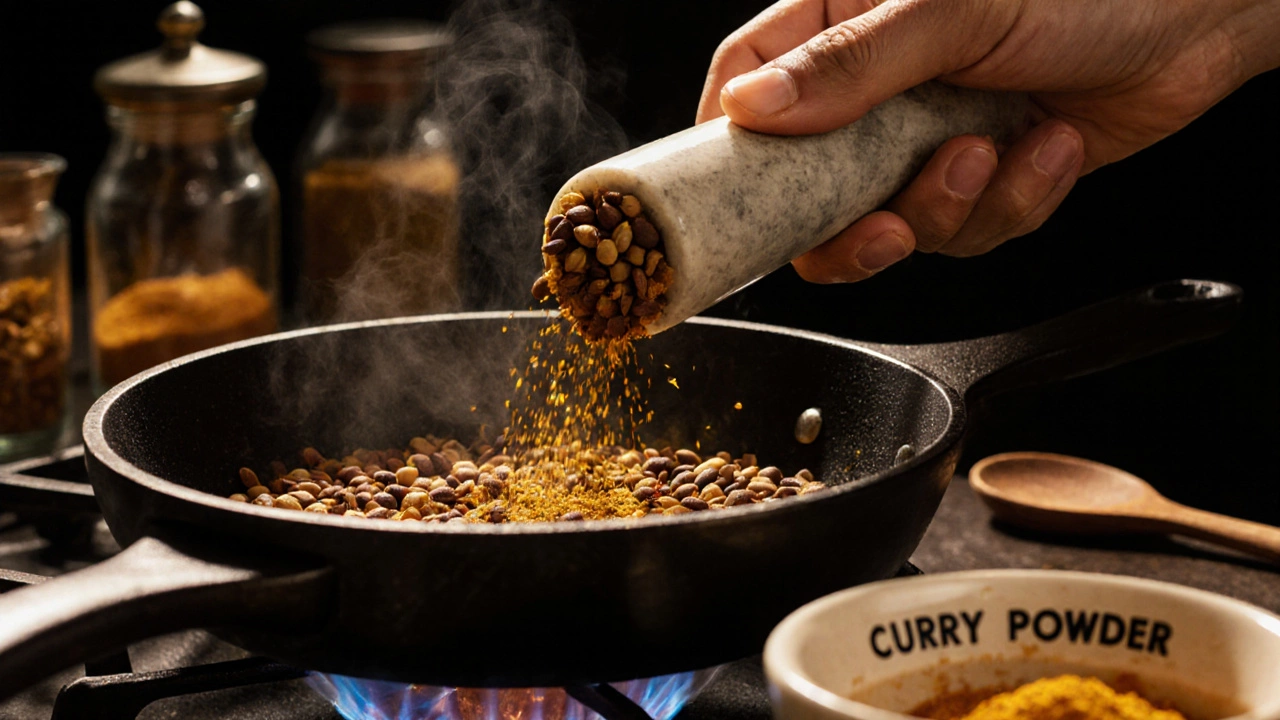
The Core Spice Line‑up
Each of the following spices appears in the majority of Indian curry recipes. We’ve added a short description, typical flavor contribution, and a quick tip for home cooks.
- Turmeric A bright yellow root powder that adds earthy bitterness and a subtle peppery note; also prized for its anti‑inflammatory properties. Use ½‑1 tsp per litre of sauce; add early so its colour blooms.
- Cumin (seeds or ground) Warm, nutty, slightly sweet; gives depth and a lingering after‑taste. Toast whole seeds until fragrant, then grind, or add 1‑2 tsp of ground cumin midway through cooking.
- Coriander seed powder Citrusy, floral, and mildly sweet; balances the heat of chilies. Freshly ground gives the best aroma; about 1‑2 tsp per batch.
- Mustard seeds Sharp, pungent, and slightly bitter; they “pop” and release a nutty oil when fried. Use ½ tsp of black or brown mustard seeds; fry in hot oil at the start.
- Fenugreek leaves or seeds Bitter-sweet with a maple‑like aroma; a tiny pinch can lift a sauce. Seeds: ¼ tsp toasted; leaves (kasuri methi): crumble and finish the dish.
- Cardamom Sweet, floral, and slightly mentholated; adds a fragrant lift. One or two pods, cracked, or ¼ tsp ground, added near the end.
- Chili powder or fresh chilies Heat and bright pepper notes; the level can be dialed from mild to fiery. Adjust to taste; start with ½ tsp of Kashmiri chili for color and moderate heat.
- Ginger (fresh or powdered) Sharp, citrusy heat that brightens the sauce. Fresh ginger (1 tsp minced) or ½ tsp ground added early.
- Garlic Savory, pungent backbone; works with ginger as a classic duo. 1‑2 cloves minced, sautéed with onions.
Building a Basic Curry Powder
Once you have the core spices stocked, you can grind a quick all‑purpose powder. This works for day‑to‑day vegetable curries, lentil stews, and simple meat dishes.
- 2 parts coriander seed powder
- 1 part cumin powder
- 1 part turmeric powder
- ½ part chili powder (adjust for heat)
- ¼ part fenugreek seed powder (optional)
- ¼ part ground cardamom (optional)
Toast the whole spices (coriander, cumin, fennel if you like) in a dry pan for 2‑3 minutes until aromatic. Let them cool, then grind on a spice grinder. Store the blend in a sealed jar away from sunlight.
Storing and Using Your Spices
Freshness is the biggest enemy of flavor. Follow these simple rules:
- Keep spices in airtight glass jars, not plastic.
- Store them in a dark cupboard, not above the stove.
- Label jars with purchase date; most whole spices stay potent for 2‑3 years, ground for 12‑18 months.
- Toast whole seeds just before grinding to release essential oils.
- Avoid shaking jars; gently tap the lid to settle dust.
When a recipe calls for “spice powder,” add it after the onions turn golden. This prevents the volatile flavors from evaporating.
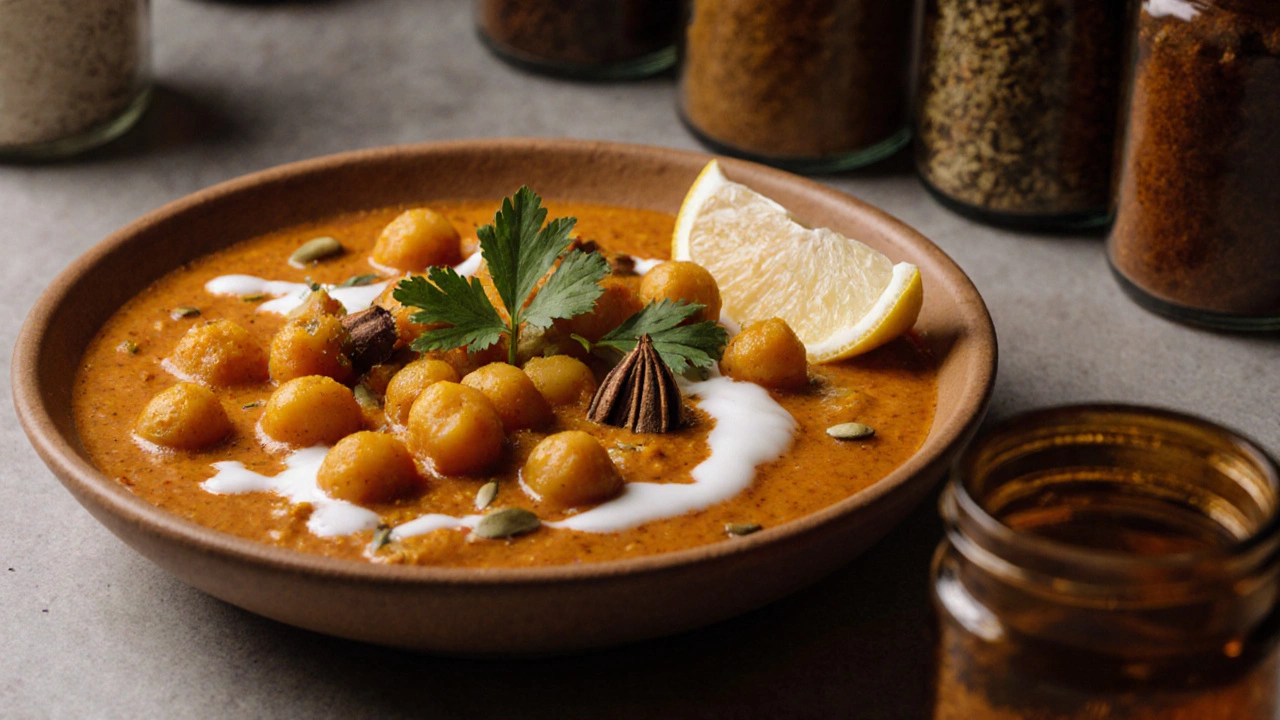
Substitutions and Scaling
Not every pantry has fenugreek or cardamom. Here are work‑arounds that keep the profile recognisable:
| Missing Spice | Best Substitute | Quantity Ratio |
|---|---|---|
| Fenugreek seeds | Maple sugar + a pinch of mustard | 1 tsp maple sugar + ¼ tsp mustard per ¼ tsp fenugreek |
| Cardamom | Ground cinnamon + a pinch of nutmeg | ½ tsp cinnamon + ¼ tsp nutmeg per ¼ tsp cardamom |
| Mustard seeds | Ground yellow mustard powder | Use ¼ tsp powder for every ½ tsp seeds |
| Kashmiri chili | Smoked paprika | Swap 1:1 for color, add extra cayenne for heat |
If you need to double or halve a recipe, keep the spice ratios consistent. A common mistake is to double the chilies but not the other spices, which throws off balance.
Test It Out: Simple Chickpea Curry
Try this 20‑minute version to see how the core spices work together.
- Heat 2 tbsp oil, add ½ tsp mustard seeds and wait for them to pop.
- Add 1 chopped onion, 2 minced garlic cloves, and 1 tsp grated ginger; sauté until golden.
- Stir in 1 tsp each of turmeric, cumin, coriander, and chili powder; cook 30 seconds.
- Add 1 can (400g) drained chickpeas and 1 cup tomato puree; simmer 10 minutes.
- Finish with a handful of fresh cilantro and a squeeze of lemon.
The result should be warm, earthy, and just a touch tangy - proof that the core spices do all the heavy lifting.
Frequently Asked Questions
Can I use fresh turmeric instead of powder?
Yes. Peel and grate about 1 tsp of fresh turmeric for every ½ tsp of powder. Fresh root gives a brighter, slightly peppery note, but it can stain countertops, so wear gloves.
Do I need to grind each spice every time I cook?
Whole seeds release more flavor when toasted and ground fresh. For everyday cooking, a pre‑ground blend works fine; just store it airtight and use within six months.
How long does a homemade curry powder stay good?
Stored in a cool, dark place, a homemade blend retains peak flavor for about 12‑18 months. After that, the aromatics fade, and the spice may taste flat.
Is it okay to skip fenugreek if I don’t like its bitterness?
Absolutely. Fenugreek adds a subtle sweet‑bitter note, but many home cooks omit it without harming the overall taste. You can replace it with a pinch of maple sugar for a milder sweet edge.
What’s the difference between curry powder and garam masala?
Curry powder is typically milder and includes turmeric for colour. Garam masala is a finish‑spice blend, often hotter, and added at the end of cooking. Both share many core spices, but their timing and heat profiles differ.





